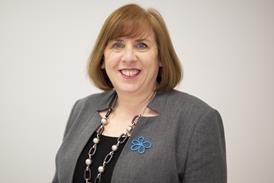Ruth Poole looks at the challenges facing the clinical home care industry, which are prompting innovation and new models of care
In association with

When clinical home care was first established it was leading edge, but nearly three decades on, receiving specialist medicines at home is a bit more routine.
The range of treatments that can be delivered outside hospitals has increased substantially and there is still much potential to extend the service if we include all medicines known to be suitable for home care.
Practical recommendations from the Hackett report - Homecare Medicines – Towards a Vision for the Future - have been implemented, but since its release new models of care are developing in response to an ever changing healthcare environment and evolving patient need and expectation.
So what happens next?
A perfect storm
The dilemma is ensuring that the cost/choice/sustainability continuum is navigated to ensure better patient outcomes while providing value for the NHS.
An ageing population with multiple long term conditions and more complex care requirements means that limited budgets have to stretch even further and prices are pushed down.
Add to this the fact that the system is short of clinical staff to provide specialist nursing, we have a perfect storm and providers need to look at how they maximise scarce resources while maintaining high levels of patient care.
Mixed model
The solution surely lies in a mixed model that enables a more personalised and flexible approach for patients. Not all patients are house bound and because of medical advancements patients can live an active life while managing a long term condition.
However, any alternative care model needs to guarantee an appropriate interaction with a healthcare professional who can perform a quality intervention when required.
A community pharmacy based service is an accessible and convenient setting for patients with advice and medicine adherence support on hand.
Healthcare Centres from LloydsPharmacy will provide an alternative nurse led service that increases patient choice, keeps them out of hospital and, crucially, drives a positive clinical outcome.
The provider benefits from increased productivity for nursing staff with multiple patients being treated in the same environment. Trusts are able to free up time and capacity in hospitals to concentrate on those patients — or therapies — that need it. Clinicians retain control and can be assured that quality is maintained.
It’s all about meeting patients’ needs where they are either in their disease journey or in their lives — flexibility is crucial. Offering choice to the patient such as hospital, local community and in their own home can help them optimally comply with their healthcare regime which is not only better for them, it is cheaper.
After all, supplying services in a way that suits the patients and can be delivered closer to their home makes sound economic sense; good clinical outcomes = better value and sustainable healthcare. And that helps us all.






























No comments yet